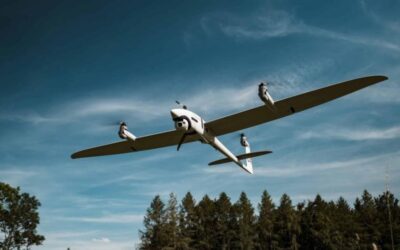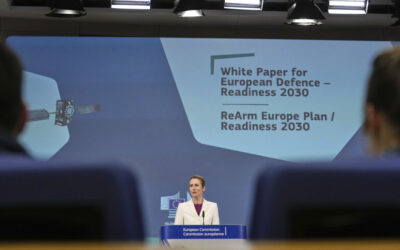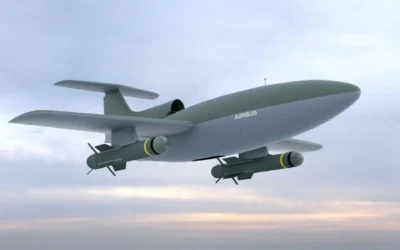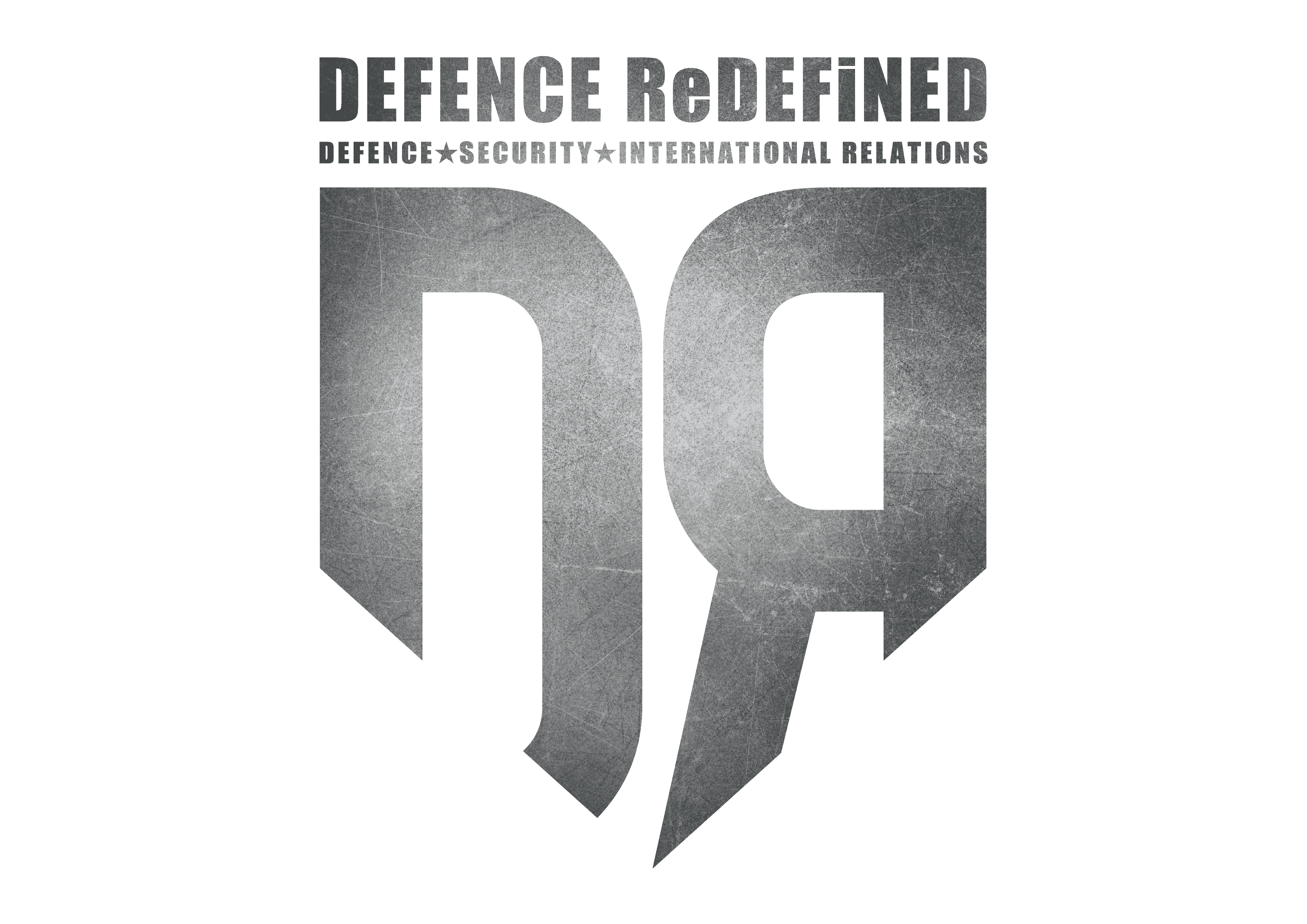The European Investment Bank (EIB) has agreed on a series of measures to further boost investment in security and defence, as well as in critical raw materials.
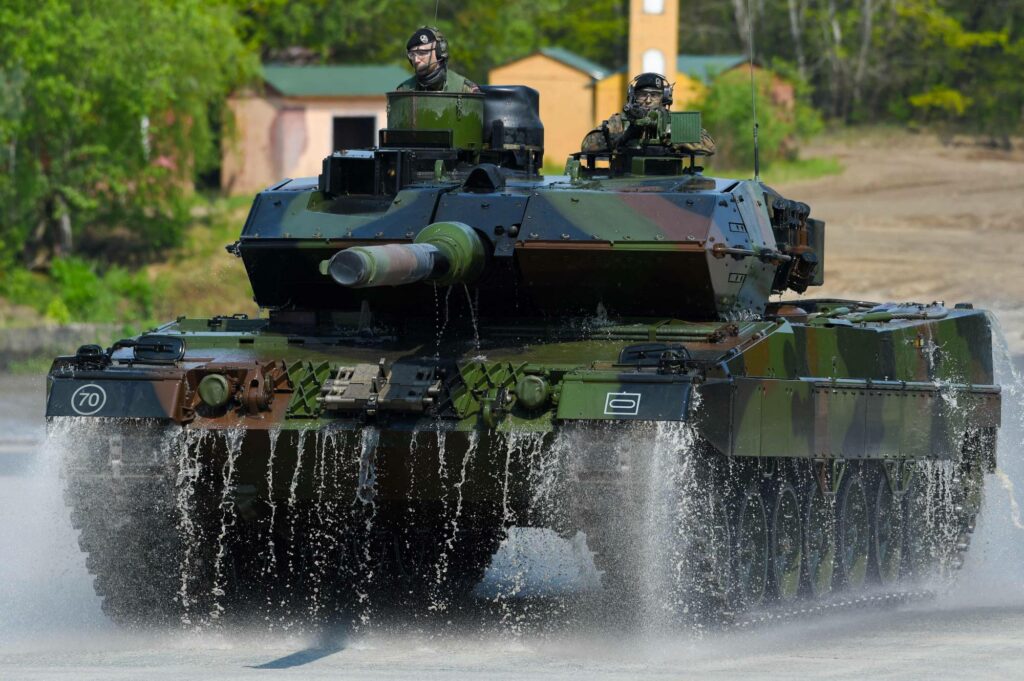
Military spending in Europe surpassed its post-Cold War level in 2022, marking the highest increase in more than three decades.
According to the data revealed by the Stockholm International Peace Research Institute (SIPRI), the main cause is considered to be the start of the war in Ukraine.
On all continents together, military spending hit a new peak in 2022, amounting to 2.24 trillion dollars, that is, 2.2% of global GDP. On a global scale, this is the eighth consecutive year of increase in military investments (+3.7%).
The European continent spent, after adjustment of the inflation, 13% more on military spending in 2022. This is the largest increase in more than 30 years and a return – in deflated dollars – to the level of spending in 1989, the year the Berlin Wall came down.
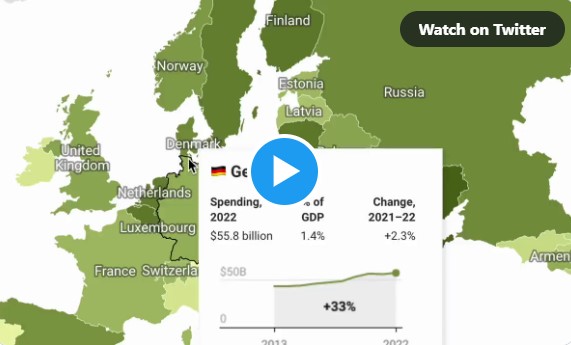
Military expenditure in Europe saw its steepest year-on-year increase (⬆️13%) in at least 30 years. Ukraine’s🇺🇦 military spending rose by 640% to $44 billion in 2022 ➡️ https://t.co/CUMd3854kT
Explore the interactive map of Europe ➡️ https://t.co/3yjLK4aWVJ pic.twitter.com/ImQ7Beva7C
— SIPRI (@SIPRIorg) April 24, 2023
Ukraine (11th) practically septupled (+640%) its military spending, which jumped to $44 billion, that is, a third of its GDP. And that’s without counting billions of dollars in arms donations from abroad, SIPRI points out.
Russian military spending rose by 9.2 percent, according to the institute’s calculations. Russia thus found itself from fifth to third place. European military spending, which reached $480 billion in 2022, had already increased by more than a third in ten years and the trend is expected to continue in the next decade. It could potentially grow at a rate similar to 2022 for years, according to SIPRI.
After a large decline in the 1990s, global military spending began to rise again in the 2000s. This is owing to China’s heavy investment in its military and because of the resurgence of tensions with Russia following the annexation of Crimea in 2014.
Also read: 2022 – Armed Conflicts | Full review of armed conflicts and the next day
The USA is first by far – China comes second
The US alone accounted for 39% of global military spending in 2022. Together with China, which now ranks second (13%), it accounted for more than half of the world’s military spending last year. The next countries, Russia (3.9%), India (3.6%), and Saudi Arabia (3.3%), are a long way off.
Japan, as well as Indonesia, Malaysia, Vietnam and, further afield, Australia are trying to follow the trend. Britain is the first European country on the list, in 6th place (3.1% of global spending), ahead of Germany (2.5%) and France (2.4%) – these figures include their donations to Ukraine.
Britain, the second largest donor behind the US, has traditionally spent more than Germany and France and has also given more weapons to Ukraine than Germany and France, remaining Europe’s top military spender.
Moreover, countries such as Poland, the Netherlands, and Sweden are among those that have increased their military spending the most in the last decade.
Last month, another SIPRI report revealed that European arms imports almost doubled (+93%) in 2022, largely due to massive deliveries to Ukraine, which has become the world’s third-largest destination for military equipment.
With information from: Euronews
Also read: SIPRI | Increase in arms imports to Europe – US dominance of global arms trade
READ MORE
European Union | Joint White Paper for European Defence Readiness 2030
Yesterday, the High Representative for Foreign Affairs and Security Policy and the European Commission presented a White Paper…
Libya | Announcement of Licensing Round for Exploitation of Energy Resources
Libya has officially announced its first oil and gas licensing in 17 years, offering 22 areas for international auction.
HCDI | The Programmatic Horizon of Research and Development Projects for 2025
The Hellenic Defence Innovation Center (HCDI) announced its Programmatic Horizon of Research and Development Projects for 2025, which…
RAFNAR Hellas | New Shipyard in Lavrio, Expansion in Keratea, and New 62-Foot Vessel
RAFNAR Hellas has announced the official opening of its new state-of-the-art shipyard and headquarters in Lavrio, along with a…
IVECO DEFENCE VEHICLES – METLEN | Strategic Alliance for the Hellenic Army’s Military Truck Fleet Modernisation
METLEN and Iveco Defence Vehicles (IDV) have signed a Memorandum of Understanding (MoU), establishing an exclusive collaboration…
Prisma Electronics | Delivery of the First Systems for the FDI Frigates
Prisma Electronics has successfully delivered the first systems for the FDI frigates, having passed all rigorous acceptance…
Massive Ancient Greek Defensive Wall Unearthed in Croatia
An ancient Greek defensive wall, dating back at least 2,000 years, has been uncovered near the Adriatic coast of Croatia, the…
Airbus | Demonstration of LOAD Against Kamikaze Drones
At the “Unmanned Systems X” trade show held in Bonn, Germany, on 25-26 March, Airbus introduced its new unmanned air defence system, LOAD.










